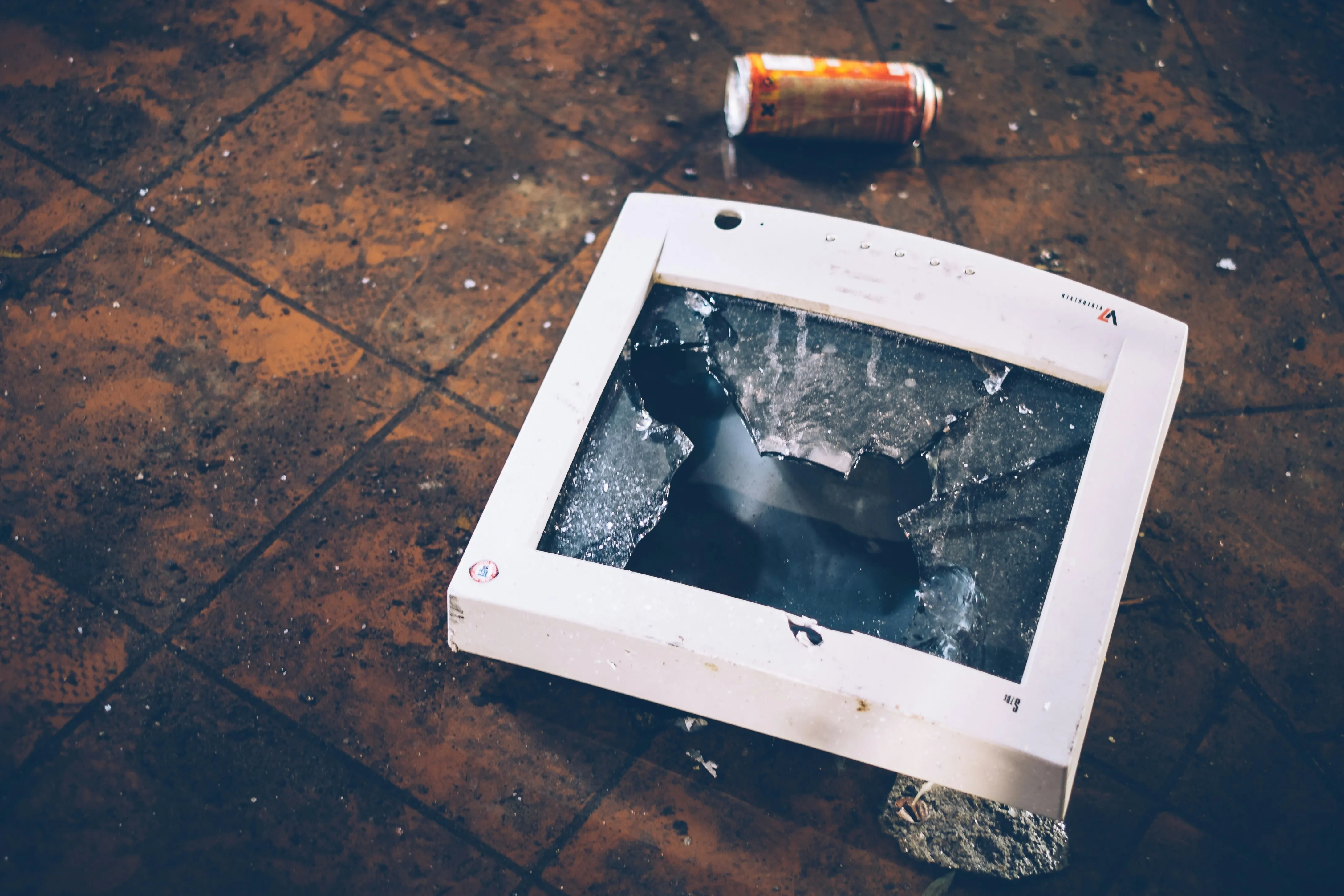Welcome to the Broken CRT Monitor exhibit.
This once-functional monitor, with its bulky frame and curved glass screen, is now cracked and shattered. The front glass is splintered in several places, and the screen no longer lights up. The plastic casing is yellowed with age, showing signs of wear from years of use. Though it can no longer display images, this broken CRT monitor reminds us of a time when technology was heavier, slower, and more tangible than the sleek screens we use today.
CRT (Cathode Ray Tube) monitors were a staple of early computing and television, using an electron beam to create images on the screen. The large, boxy shape was necessary to house the complex inner workings, including the vacuum tubes that powered the display. Over time, these monitors became outdated, replaced by slimmer, more efficient models. This particular CRT monitor, with its broken glass and faded casing, stands as a symbol of how quickly technology evolves. Even in its broken state, it represents a crucial part of the history of screens and the way people once interacted with digital media.
 Museum of Broken Things
Museum of Broken Things
